Military dentists generally operate much like a civilian dentist during peace time or when on the home front. However, particularly in wartime, military dental officers are ready to answer the call of duty as it occurs - acting as medical personnel wherever and however they can help.
The stories in this section are of dental professionals, both civilian and military, who leapt into action in support of military efforts when it was needed, making history in the process.
This section also features stories of military dentists who have received decoration or other special recognition for their service to dentistry and the U.S. military or have left their mark as the first person to reach a particular achievement or position in their field.
To gain context for the lives of many of the individuals featured here, visit the Dentistry at the Front Line section of this exhibit. If you'd like to learn more about a particular person person featured here, scroll to the bottom of the page for the list of references used. If you have other questions, please contact the ADA Library & Archives.
Dr. Leonie von Zesch
- First woman dentist in the US Army, remaining the army's only female dentist until 1951
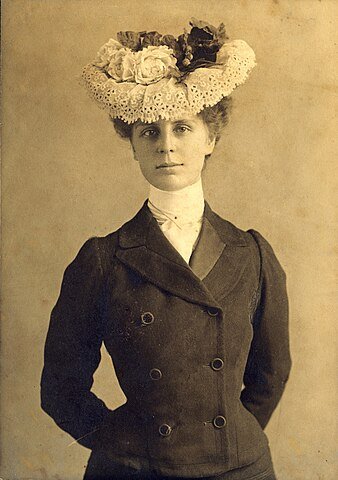
In 1902, at the age of 19, Leonie von Zesch earned her Doctor of Dental Surgery degree from San Francisco's College of Physicians and Surgeons. She was an industrious worker and while with her first employer collapsed from exhaustion after treating patients for more than 12 hours a day, six or seven days a week.
Only four years into her career, the building Dr. von Zesch shared doubly — once as a co-owner of a dental practice and again as the home she shared with her mother — was lost in the fires following the 1906 San Francisco earthquake.
Leonie and her mother made their way to a refugee camp the army had set up at the Presidio Army base. Despite the trauma they had just endured, the elder von Zesch volunteered with the Red Cross and her dentist daughter offered her services to the army. Both offers were accepted and both women were paid and housed by the army, making Leonie von Zesch the first and only woman dentist in the U.S. Army until 1951.
The relief effort dragged on for months, but Leonie persisted with her care of the 30,000 people at the Presidio base even when the Board of Health attempted to replace her with a male dentist. She savvily leveraged the power of influential friends, Mayor Eugene Schmitz and Army Brigadier General Funston, who had her reinstated in her role until the relief effort was finished.
In 1908 von Zesch cared for the thousands of seamen returning with the Navy's Great White Fleet from its tour around the world. She had reached agreements with the commanders of both the U.S. Pacific and Atlantic Fleets to organize care for the crew. Her gender was still a problem, however, so she relied on supportive male colleagues to collect and cash checks for her until she was discovered by the navy and replaced with a male dentist.
Before passing away in 1944, Dr. von Zesch continued to help people with and without government funds, having countless adventures along the way such as travelling to provide dental care via dog sled. Her work benefitted many underserved communities, in particular Indigenous groups in Arizona and Alaska, the Unemployment Exchange Association (UXA) during the Great Depression, and women incarcerated in California — training many of them as dental assistants.
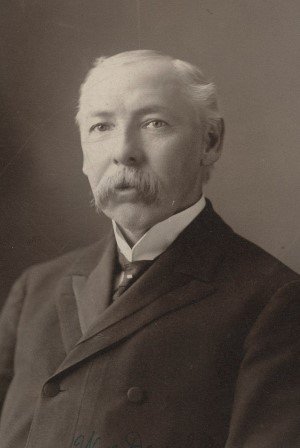
Dr. Williams Donnally
- Prominent advocate for the establishment of a military dental corps
- First officer in the Navy Dental Reserve Corps
Dr. Williams Donnally, at right, worked for more than two decades to have dentistry's value recognized by the army and navy, collaborating closely with the ADA's Legislative Committee.
In 1911 President Taft signed into legislation the Army Dental Corps. The next year he signed similar legislation establishing the Navy Dental Corps, and in 1913 the Navy Dental Reserve Corps was established.
Dr. Donnally, was commissioned as an officer in the Navy Dental Reserve Corps and became the first Navy Reserve officer, appointed the year the reserve corps was established. Each of the Dental Corps provided for the recruiting of commissioned officers equal in pay and grade to those in the U.S. Army and Navy Medical Corps. Prior to this work, members of the military were expected to be responsible for their own dental care or rely on U.S. Army-contracted dentists.
Vice Admiral Alexander G. Lyle
- First dental officer to earn a Medal of Honor
- First dental officer awarded the U.S. Army's Silver Star
- First member of the Dental Corps to achieve the rank of Vice Admiral
The Medal of Honor is the highest U.S. military decoration. According to the Congressional Medal of Honor Society, "of over 3,000 Medal of Honor Recipients, only 3 have been dental officers". Alexander G. Lyle was the first of these dental officers to earn his Medal of Honor citation. He completed this feat early in his career, as a Lieutenant Commander during World War I.
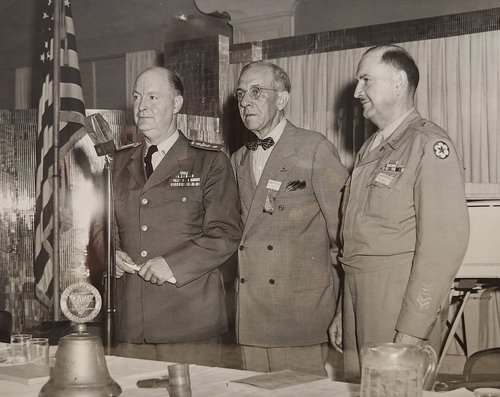
Lyle graduated from the Baltimore College of Dentistry in 1912 at the age of 23. In 1915 he entered the U.S. Navy as a Lieutenant Junior Grade (LTJG), quickly progressing to the rank of Dental Surgeon and then Lieutenant Commander by the time he earned his Medal of Honor.
Dr. Lyle was serving as a Lieutenant Commander on the French front of WWI when he risked his life to save another soldier: Corporal Thomas Regen. The corporal had been critically wounded by shellfire when Lyle ran out into danger, pulled the officer to relative safety (though still under heavy fire), and performed life-saving emergency surgery. Lieutenant Commander Lyle was awarded the short-lived Tiffany Cross edition of the Medal of Honor for his conduct.
Lyle went on to have an illustrious military career. By the time he retired in 1948 he had become Vice Admiral Lyle. Along his journey to become the first member of the U.S. Dental Corps to reach the rank of Vice Admiral, he had received numerous decorations: two Silver Stars, the Italian War Cross, the Legion of Merit, and the Navy Commendation Medal.
Vice Admiral Lyle is buried at the Arlington National Cemetery. His legacy is the military's mobile dental units that he helped bring to fruition. You can read about modern iterations of mobile dental units in these articles hosted on ADA Commons:
ADA News - Meet the Navy’s ‘Dental Warriors’ (pg. 9)
This article covers the Navy Dental Corps' mobile dental team, first envisioned by Captain Dr. Paul A. Lindauer DDS, Desert Shield/Desert Storm veteran and a five-year navy alternate delegate and delegate to the ADA House. The idea evolved into the smallest unit of the total dental capability of the Marine Expeditionary Force area of operation, capable of packing and mobilizing in hours.
ADA News - Dental tools combat-ready: Navy tests equipment in theater (pg. 7)
This article goes into detail about how the Navy field tests portable dental equipment to ensure that all items are fit for the demands of their environment and standardized regardless of the U.S. military branch they originate from.
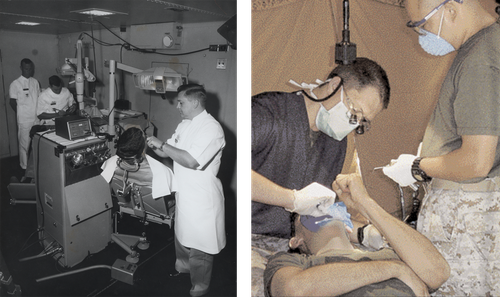
Lieutenant Junior Grade Weedon E. Osborne
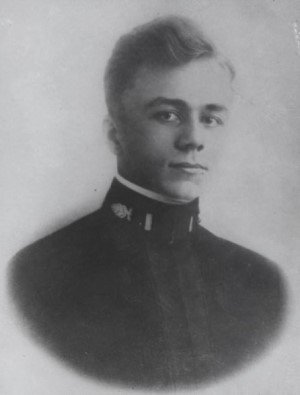
- First Navy Dental Corps officer killed in combat
- First naval officer killed in land combat in World War I
- Posthumously awarded the Congressional Medal of Honor and the Distinguished Service Cross
Originally from Chicago, Weedon Osborne graduated from Northwestern University Dental School in 1915, and in 1917 was appointed a U.S. Navy Dental Surgeon in the U.S. Naval Coast Defense Reserve.
Lieutenant Junior Grade (LTJG) Osborne was killed in action during the Battle of Belleau Wood on June 6, 1918 while acting as a replacement dental officer for the 6th Marine Regiment of the Marine Expeditionary Force in France. During the battle he "scrambled to retrieve the wounded and rush them to safety" and while attempting to move his comrade, Captain Donald Duncan, without aid from other soldiers a German shell struck and killed both men.
He was buried at the Aisne-Marne American Cemetery and Memorial in Belleau, France. For his valor and "extremely courageous" acts in the heat of battle, Osborne was posthumously awarded one of only 12 Medals of Honor received by American naval personnel throughout World War I and a Distinguished Service Cross. Like Vice Admiral Lyle, LTJG Osborne's Medal of Honor was the short-lived Tiffany Cross version.
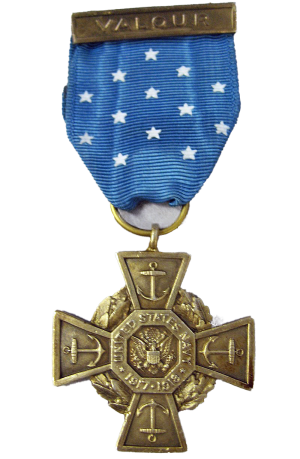
Mrs. Elizabeth Osborne Fisher received her brother Weedon's medals and in 1919 sponsored the destroyer named in his honor, the U.S.S. Osborne. Additionally, a U.S. Naval Academy road and the U.S.S. Osborne Dental Clinic were also dedicated in his memory. According to the Veteran's Administration, the U.S.S. Osborne Dental Clinic currently provides dental treatment to more than 40,000 enlisted recruits annually.
The Battle of Belleau Wood is often credited with changing the momentum of the war in favor of the Allies. The impact of the battle was so great that France later renamed the site from Bois de Belleau to Bois de la Brigade de Marine.
Dr. William A. Birch
By all rights, Dr. William A. Birch should have been the first Black contract dentist for the U.S. Army. In 1900, at the age of 22, William A. Birch graduated from dental school and enlisted as a private in the U.S. Army Hospital Corps. At enlistment, his occupation was recorded as “dentist - colored”.
In 1901, the 56th U.S. Congress passed An Act To increase the efficiency of the permanent military establishment of the United States. It stated:
Since Dr. Birch had been employed as a U.S. Army hospital corpsman for the requisite period, he was entitled to the position of contract dental surgeon, provided he received the proper recommendations and that there were fewer than 30 dentists in the role already. By the end of 1901 Dr. Birch officially applied to be a U.S. Army contract dentist, with testimonials from his detachment commander, Thomas F. Miller, and his former professor Robert T. Oliver, who by then had become the U.S. Army’s Examining and Supervising Dental Surgeon – second only to the Chief Surgeon. Respectively, they described Private Birch as
By the time Private Birch submitted his application, Dr. Oliver had been deployed to the Philippines to assist the Chief Surgeon’s division with establishing the Army dental service. Olivier would be working directly with Chief Surgeon - Division of the Philippines, Major General Loyd Wheaton – the man in charge of reviewing applications for the Contract Dental Corps.
With this stroke of fate, Dr. Birch had, seemingly, received the best possible recommendations an applicant could hope for. However, his application was only provisionally approved by Major General Wheaton, who asked for a "further expression of opinion" from the officers who had provided testimonials as “it must be stated that the applicant is a colored man”.
The officers' reply was that “the original recommendation that Pvt. Birch be allowed to take the examination, is adhered to." An examination that Private Birch, if only by virtue of his army tenure, should not have had to take.
Despite this steadfast endorsement, some medical officers believed that Birch would only be able to work on Black soldiers, and “the field of operation would be too small”. With these ‘problems’ identified, in February 1902 Major General Wheaton reversed the earlier decision and denied Birch's application "at this time." While Birch’s application had been in review, several white hospital dentists were appointed as contract dental surgeons "without examination." After this, Dr. Birch decided to leave the army.
In April 1902, he applied, and was subsequently approved for, "discharge by purchase" to take advantage of a ‘good position’ as a dentist available to him.
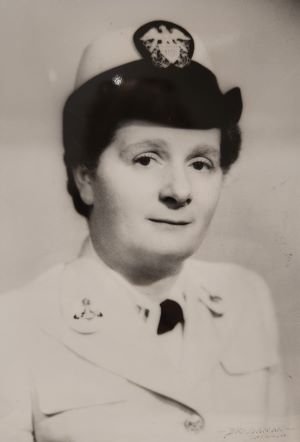
Commander Sara G. Krout
- First female dentist in the U.S. Navy
Dr. Sara Krout was born in Riga, Latvia and received her D.D.S. at the University of Riga. She served as a Red Cross dentist towards the end of World War I and immigrated to the U.S. soon after the close of the war. To ensure she could continue in her field, Dr. Krout attended dental school at the University of Illinois College of Dentistry and earned her second D.D.S. in 1924.
Twenty years later, during World War II, Dr. Krout enlisted in the U.S. Navy’s reserve force for women, the W.A.V.E.S. (Women Accepted for Volunteer Emergency Service) as a Lieutenant. Women could not enlist in the traditional military at the time and so in 1942 the program had been established to allow women aged 20-50 to serve the Navy onshore, within the borders of the United States. With the W.A.V.E.S. being a part of the U.S. Navy, Dr. Krout's enrollment in the program made her the first female dentist in the Navy.
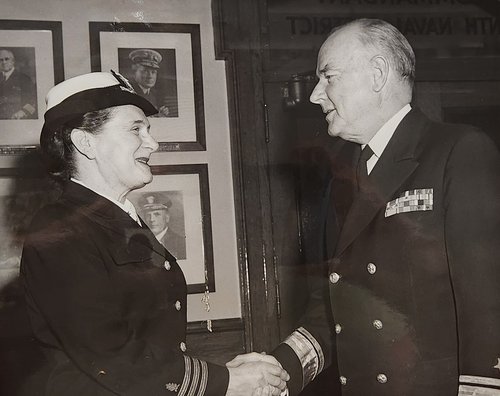
Dr. Krout remained on active duty as a dentist at Chicago’s Great Lakes Naval Training Station until 1946. During that time she completed routine dental work, presented clinics on dentures, and supported a research project of the 9th Naval District.
After the war she served in the U.S. Naval Reserve, the Association of Military Surgeons of the United States, and she continued to lecture for W.A.V.E.S. In 1950 she was promoted to Lieutenant Commander and in 1955 she became Commander Krout, before retiring from the military in 1961.
She continued to practice in Chicago into her 80s and attended every Midwinter Meeting until her 90th year, when she passed away. She was described in her obituary as:
<p style="margin-bottom: -1rem; text-align: center">"a woman of valor... a forerunner of the liberated woman"</p>
For her 90th birthday, a few months before her death, Dr. Krout was honored with a Navy birthday party and cut her cake with a sword, dressed in full Navy uniform with three stripes.
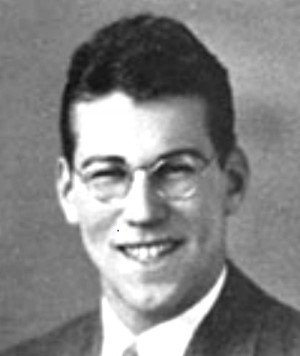
Captain Benjamin Salomon
- First and only Army Dental Officer to receive a Medal of Honor
Benjamin L. Salomon was born to Jewish parent in Milwaukee, Wisconsin, in either 1914 or 1915 (records disagree on the year).
He attempted to join the U.S. Army directly after graduating from the University of Southern California School of Dentistry but was rejected due to a perceived lack of need for his profession. Three years later he was drafted into the army as an infantry private, skyrocketing to the rank of Sergeant within his first year.
In 1942 he was commissioned into the Army Dental Corps as a First Lieutenant. He requested to stay with his infantry unit as a second lieutenant but his request was denied and Salomon was transferred to Hawaii to serve as a regimental dentist. Again he was quickly promoted, this time to Captain.
In the penultimate year of the war Captain Salomon's regiment was deployed to the Marinas Islands where he was assigned to a front line aid station. The next month, July 1944, the Japanese launched one of the largest attacks in the Pacific Theater. Salomon's tent was protected by four men manning two machine guns while he retrieved and triaged wounded soldiers.
His station was quickly overrun by the flood of Japanese soldiers, despite his incredible efforts to deter them. Captain Salomon gave the order to for all of the wounded to immediately evacuate the area while he stayed behind with the machine gunners to hold off the enemy tide. After the four machine gunners were killed, Salomon abandoned the rifle he had taken from one of his evacuating patients and took up the machine gun himself.
When the site was returned to days later his massively wounded body was found at one of the machine guns between his abandoned aid tent and the bodies nearly 100 Japanese soldiers.
Despite this epic and clearly attested act of heroism, it took five separate nominations over the course of more than 50 years for him to be awarded the Medal of Honor. The point of contention was first that Captain Solomon was wearing what Major General George W Griner called a "Red Cross brassard" at the time of his death and later "time constraints". Even the Surgeon General of the U.S. Army and the Secretary of the Army could not get Solomon his medal. Finally, in 1998, his recommendation by Congressman Brad Sherman and the USC Dental School with support from the Chief of the Army Dental Corps, Major General Patrick D. Sculley, was approved. In 2002 Captain Solomon was posthumously awarded the Medal of Honor by President George W. Bush for his action on the Saipan Islands.
Today the Fort Moore, Georgia dental clinic is named for Captain Salomon. Salomon Dental Clinic sees around 30,000 patients each year, with a dental readiness of 98% after treatment. "Exams, X-rays, and mouth guards are provided for each soldier. Those that are found to be non deployable will then be scheduled at Salomon for dental treatment."
Dr. Helen Myers
- First female dentist commissioned by the U.S. Army Dental Corps
Dr. Helen Myers was the first female dentist commissioned by the U.S. Army Dental Corps. She had advocated for the right of women to serve in U.S. military from the time of her dental school graduation in 1941 until 1951 when the U.S. Army Dental Corps called for the "maximum utilization" of professionals during the Korean War. Up until that time, women could not serve in the Corps. In 1951 she was commissioned as a Captain in the Army Dental Corps – the first woman to serve directly in the Dental Corps of the United States Armed Forces, as opposed to an auxiliary group.
As a Captain, she insisted on attending the officers' orientation program and crawling the infiltration course. She served overseas in Italy and Japan, crafting dentures for a crew member with improvised tools and materials on the ship heading to her European tour. She had a passion for aviation and took every opportunity to fly both in and out of the military.
Rear Admiral Carol I. Turner
- First female Chief of the U.S. Navy Dental Corps
- First female dental officer in charge of a branch or clinic
- First female Dental Corps officer to serve on a ship
Dr. Turner graduated with distinction from Indiana University with her D.D.S in 1975. Two years later she was commissioned as a lieutenant in the U.S. Navy Dental Corps. In 1979 she was assigned to the U.S.S. Vulcan as the first female Dental Corps officer to serve on a ship, which she described as a career highlight.
She later served under the chief of the Navy Dental Corps from 1988-1991, which she credited with shaping her understanding of military decision making.
In 1993 she assumed command of the 12th Dental Company at Cherry Point Marine Corps Air Station as Captain Carol Turner. She then became the National Naval Dental Center Commanding Officer before becoming a Rear Admiral and finally being appointed the first female Chief of the U.S. Navy Dental Corps in 2003. At that time she also became the Deputy Chief of the Bureau of Medicine and Surgery (B.U.M.E.D.).
References
The bulk of the information in "Honoring the History Makers" is from:
American Dental Association. 150 Years of the American Dental Association: A Pictorial History, 1859-2009. Donning Co. Publishers, 2009.
The rest of the references are ordered by appearance in the exhibit. References used more than once are listed where they first appear. If you cannot access items listed below, please contact the ADA Library & Archives.
- Congressional Medal of Honor Society - 3 Dentists Who Received the Medal of Honor
- von Zesch, Leonie. Leonie: A Woman Ahead of Her Time. Lime Orchard Publications, 2011.
- Sindecuse Museum - Leonie von Zesch (1882-1944)
- The Lucy Hobbs Project, Benco Dental - How the 1st female dentist in the US Army survived the 1906 California ‘Exodus’
- Alaska Women's Hall of Fame, Class of 2012 - LEONIE Von (Meusebach) Zesh DDS
- Grady R. Letter to the editor of Dental Cosmos. In: Army and Navy Dental legislation. Dental Cosmos. 1908;50:720–721.
- found in “Chapter IX: The Struggle for a Commissioned Corps Continues, 1905–1908.” A History of Dentistry in the US Army to World War II, Office of the Surgeon General, United States Army ; Borden Institute, Walter Reed Army Medical Center, Falls Church, DC, 2008, pp. 269–319.
- Hyson, John M., et al. A History of Dentistry in the US Army to World War II. Office of the Surgeon General, United States Army ; Borden Institute, Walter Reed Army Medical Center, 2008.
- Congressional Medal of Honor Society - Alexander Gordon Lyle
- VA.gov - USS Osborne Dental Clinic
- Military Hall of Honor - LTJG Weedon Edward Osborne
- Marine Corps University - Lieutenant (Junior Grade) Weedon E. Osborne, USN (Deceased)
- Veteran Tributes.org - Weedon E. Osborne
- Congressional Medal of Honor Society - Weedon E. Osborne
- Sheppard, Thomas. Naval History and Heritage Command - Extraordinary Bravery: Lieutenant Weedon Osborne and the Battle of Belleau Wood
- Hyson, John M.AFRICAN-AMERICAN DENTAL SURGEONS AND THE U.S. ARMY DENTAL CORPS: A STRUGGLE FOR ACCEPTANCE, 1901-1919.
- An Act To increase the efficiency of the permanent military
- Dental Entrepreneur Women - The History of Women in Dentistry Part II: Female Dentists Join the Military
- John M. Hyson, Female Dentists in the U.S. Army: The Origins, Military Medicine, Volume 160, Issue 2, February 1995, Pages 57–62, https://doi.org/10.1093/milmed/160.2.57
- National Air and Space Museum - Women Accepted for Volunteer Emergency Service: The WAVES Program in World War II
- ADA Newsletter. 2 February, 1962. "Navy's First Lady Dentist Retires"
- Journal of the American Dental Association. June 15, 1944. "First Woman Dentist Receives Commission in Naval Dental Corps"
- Journal of the American Dental Association. Volume 64. March 1962. "Navy's First Woman Dentist Retires"
- Wesse, Carlisle. Chicago Dental Society. August 1989. "In Memoriam: Sara Krout, D.D.S., 1899-1989"
- Archives.gov - The 1973 Fire, National Personnel Records Center
- Breed, Allen and Herschaft, Randy. 11 July, 2023. AP News - A fire destroyed millions of veterans’ records. 50 years later, families are still seeking answers
- Congressional Medal of Honor Society - Benjamin Louis Salomon
- National WWII Museum - Benjamin Salomon’s Medal of Honor
- Jewish Virtual Library - Ben L. Salomon
- Find a Grave Memorial - Benjamin Lewis Salomon
- Tricare - Dental Readiness Classification
- Health.mil - Dental Readiness Classification 3 (DRC 3)
- Maurer, Ellen. National Institute of Dental and Craniofacial Research. 17 November, 2003. "Navy Appoints First Female Chief of Dental Corps"
